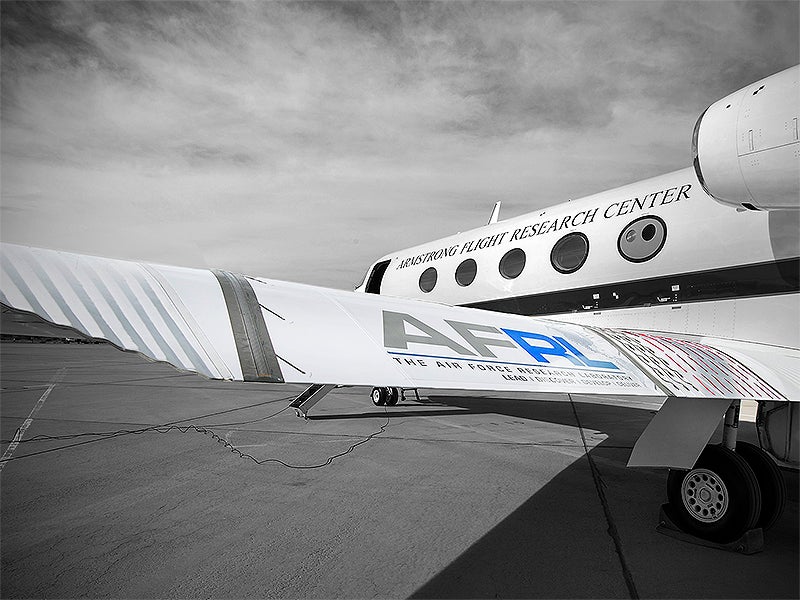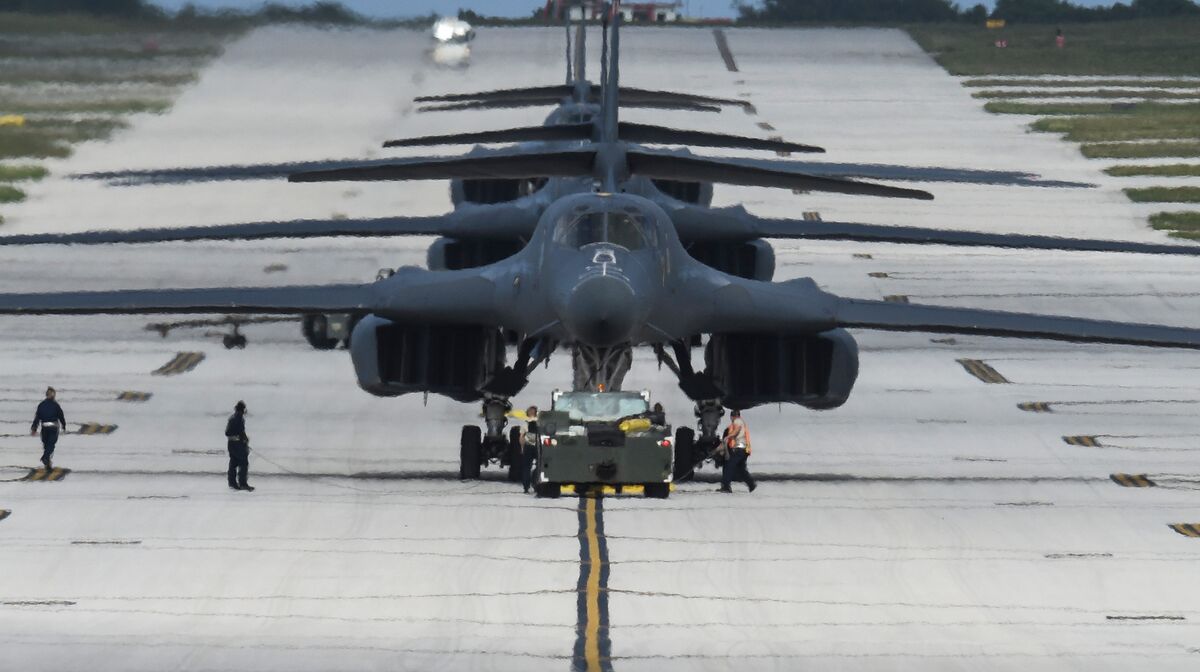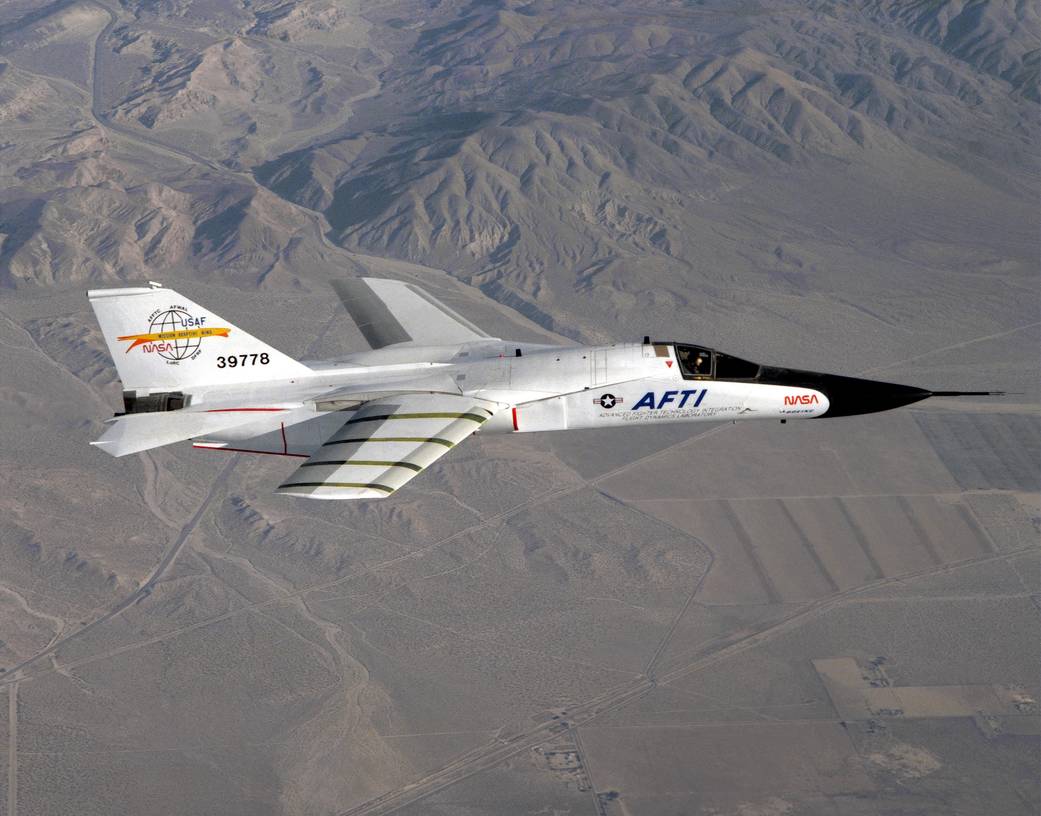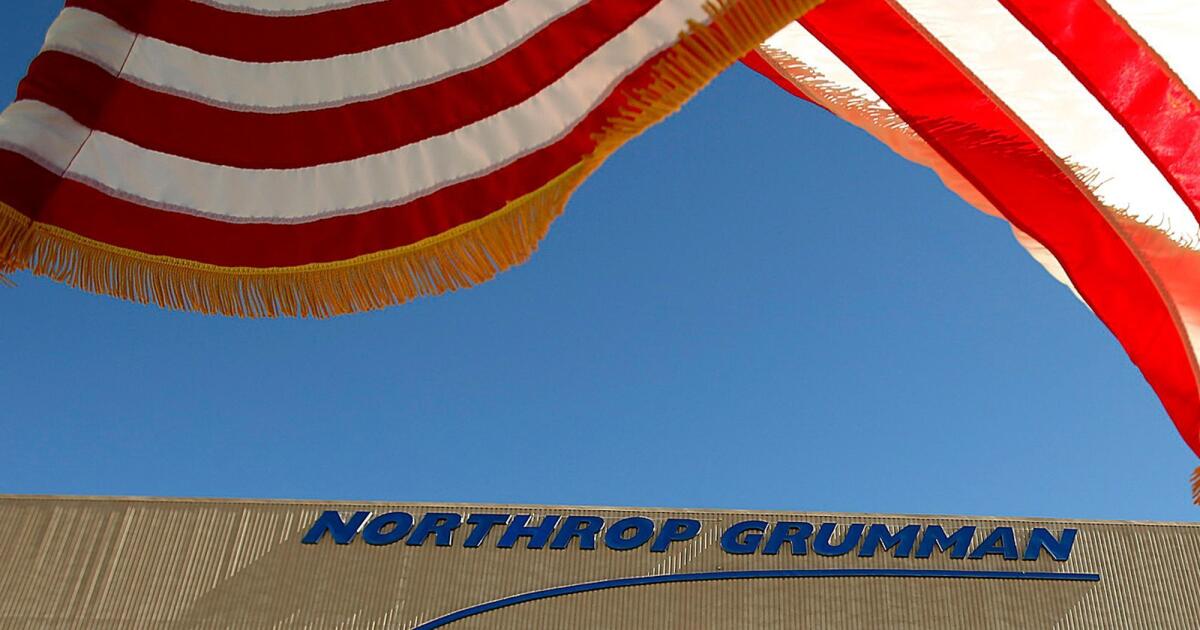- Joined
- 21 April 2009
- Messages
- 13,171
- Reaction score
- 6,062

The Future Of Stealth Is "Morphing Wing" Technology, But Will The B-21 Feature It?
The cutting-edge technology's benefits read like a wishlist for stealth aircraft designers.

bobbymike said:http://www.thedrive.com/the-war-zone/15413/the-future-of-stealth-is-in-morphing-wing-technology-will-the-b-21-feature-it
Sundog said:bobbymike said:
The Future Of Stealth Is "Morphing Wing" Technology, But Will The B-21 Feature It?
The cutting-edge technology's benefits read like a wishlist for stealth aircraft designers.www.thedrive.com
Yes. About ten years ago one of my old professors grad students came up with a "producible" way of doing that and nothing has been heard since. When that happens, it's usually because they're building it. I've always assumed that is one of the big technological advantages NG had over their competitors. We'll find out eventually.
marauder2048 said:In a 1999 paper, "Aeroservoelastic Characteristics of the B-2 Bomber and Implications for Future Large Aircraft," the
Northrop Grumman authors explicitly state that future bombers would benefit from:
"Deformable/adaptive structures for improved aerodynamic performance and more affordable and maintainable survivability"
and say that:
"In fact, deformable surfaces were considered in the early B-2 design stages, but were abandoned due to
lack of technical readiness and inadequate control authority and low speed"
There is some quick discussion on RCS benefits.
Money also will be spent on producing engineering drawings for a “clean-sheet” design, he said, which means the new bomber won’t be an adaptation of the B-2 stealth bomber or other existing aircraft, as some analysts have suggested.
Northrop’s performance is “generally on track” and “within the windows of expected progress that we’ve expected at this point,” Donovan said. Still, “there is some risk in this program because it’s a brand new, clean-sheet design. So we’ll work through those.”

bobbymike said:
The Future Of Stealth Is "Morphing Wing" Technology, But Will The B-21 Feature It?
The cutting-edge technology's benefits read like a wishlist for stealth aircraft designers.www.thedrive.com
Airplane said:Well, if mission adaptable wings can be posted here so can Northrop's anti-missile missile-defense for aircraft. I had always a system like this being used on the -21, but I envisioned something like 4 Lockheed Cudas missiles each in its own small bay.
www.thedrive.com/the-war-zone/15491/northrop-grumman-has-patented-a-kinetic-missile-defense-system-for-stealth-aircraft
Airplane said:Sundog said:bobbymike said:
The Future Of Stealth Is "Morphing Wing" Technology, But Will The B-21 Feature It?
The cutting-edge technology's benefits read like a wishlist for stealth aircraft designers.www.thedrive.com
Yes. About ten years ago one of my old professors grad students came up with a "producible" way of doing that and nothing has been heard since. When that happens, it's usually because they're building it. I've always assumed that is one of the big technological advantages NG had over their competitors. We'll find out eventually.
I've been to this rodeo once before, circa 1986, only it was called the mission adaptive wing. I am sure there are pics floating around of the modified F-111.

Airplane said:Well, if mission adaptable wings can be posted here so can Northrop's anti-missile missile-defense for aircraft. I had always a system like this being used on the -21, but I envisioned something like 4 Lockheed Cudas missiles each in its own small bay.
www.thedrive.com/the-war-zone/15491/northrop-grumman-has-patented-a-kinetic-missile-defense-system-for-stealth-aircraft
Flyaway said:Airplane said:Well, if mission adaptable wings can be posted here so can Northrop's anti-missile missile-defense for aircraft. I had always a system like this being used on the -21, but I envisioned something like 4 Lockheed Cudas missiles each in its own small bay.
www.thedrive.com/the-war-zone/15491/northrop-grumman-has-patented-a-kinetic-missile-defense-system-for-stealth-aircraft
Do NG always use that same generic design when it comes to their stealth related patents.
marauder2048 said:Flyaway said:Airplane said:Well, if mission adaptable wings can be posted here so can Northrop's anti-missile missile-defense for aircraft. I had always a system like this being used on the -21, but I envisioned something like 4 Lockheed Cudas missiles each in its own small bay.
www.thedrive.com/the-war-zone/15491/northrop-grumman-has-patented-a-kinetic-missile-defense-system-for-stealth-aircraft
Do NG always use that same generic design when it comes to their stealth related patents.
Good question. I had assumed that since MSDM was an AFRL effort, NG used one
of the AFRL ESAV configurations as a nod.
Vice versa.marauder2048 said:NG used one
of the AFRL ESAV configurations as a nod.

Since being stood up in April 2003, the U.S. Air Force’s shadowy Rapid Capabilities Office (RCO) has expanded significantly, now overseeing 30 weapons programs valued at more than $30 billion over the next five years. The jewel in the organization’s crown, however, is the Northrop Grumman B-21 Raider, which now accounts for “about half” of the RCO’s total workload. One of the Air Force’s top three acquisition programs, work on the nuclear-capable, ...
Flyaway said:B-21 Raider Headed Toward Critical Design Review, RCO Says
Since being stood up in April 2003, the U.S. Air Force’s shadowy Rapid Capabilities Office (RCO) has expanded significantly, now overseeing 30 weapons programs valued at more than $30 billion over the next five years. The jewel in the organization’s crown, however, is the Northrop Grumman B-21 Raider, which now accounts for “about half” of the RCO’s total workload. One of the Air Force’s top three acquisition programs, work on the nuclear-capable, ...
http://m.aviationweek.com/defense/b-21-raider-headed-toward-critical-design-review-rco-says
NeilChapman said:Flyaway said:B-21 Raider Headed Toward Critical Design Review, RCO Says
Since being stood up in April 2003, the U.S. Air Force’s shadowy Rapid Capabilities Office (RCO) has expanded significantly, now overseeing 30 weapons programs valued at more than $30 billion over the next five years. The jewel in the organization’s crown, however, is the Northrop Grumman B-21 Raider, which now accounts for “about half” of the RCO’s total workload. One of the Air Force’s top three acquisition programs, work on the nuclear-capable, ...
http://m.aviationweek.com/defense/b-21-raider-headed-toward-critical-design-review-rco-says
In "the next year or so". That's not too helpful. I guess it is worth noting that "the CDR assesses the system final design for each configuration item in the system’s product baseline to ensure it has been captured in the detailed design documentation." Basically it's the last stop before fabrication.
They must be busy as bee's getting the production line in place. It would be fascinating to know how much of the line they will have been able to design and put in place ahead of time. I'm suspect this will not be hand built like the B-2 and will be much more like the F-35. But how is it done?
For instance, can you build a flying wing in sections? If so, how will it be sectioned?
Airplane said:Keep in mind that "hand built" B-2 could have been built in..... I think 24-32 airframes annually.
NeilChapman said:Airplane said:Keep in mind that "hand built" B-2 could have been built in..... I think 24-32 airframes annually.
I guess if you apply enough resources. The B-1 was being built very quickly. But that was a different airplane. The tolerances for stealth aircraft are magnitudes tighter.
I've watched, like everyone else, the significant manufacturing changes made possible by 9-axis CNC machines, multi-axis robots, and seemly limitless tooling possibilities. How these will be used in B-21 we're likely to catch a glimpse by observing the F-35 production line. I find the mechanics and logistics of the process fascinating. And, it's the key to driving down costs. Especially with these limited production figures.
Sundog said:I doubt the B-21 testing at Area 51. Maybe other aircraft testing/developing technology for it. It's being built at Palmdale and, my understanding is, it will perform it's test flying out of Edwards. However, I'm sure it will need to fly over Area 51, just like the B-2 did, for some of the tests; like signature testing.
Airplane said:Yeah, I kind of figured out that facility isn't destined for Raider testing... I am assuming SR-72. Why else would the hangar be so close to the runway other than to minimize the time it spends unprotected from satellites while taxiing.
quellish said:Airplane said:Yeah, I kind of figured out that facility isn't destined for Raider testing... I am assuming SR-72. Why else would the hangar be so close to the runway other than to minimize the time it spends unprotected from satellites while taxiing.
It is a scoot-and-hide shelter. The distance from the runway to the hangars and existing scoot and hide structures has been problematic and inconvenient. To avoid being seen an aircraft may have to taxi quite a way to get under cover - and that aircraft may be broken, or may need to take off again quickly to resume a test. The new structure provides cover closer to the runway as well as space for fixing or fueling one or more aircraft. There is no reason to suspect the structure is associated with any specific program.
Airplane said:quellish said:Airplane said:Yeah, I kind of figured out that facility isn't destined for Raider testing... I am assuming SR-72. Why else would the hangar be so close to the runway other than to minimize the time it spends unprotected from satellites while taxiing.
It is a scoot-and-hide shelter. The distance from the runway to the hangars and existing scoot and hide structures has been problematic and inconvenient. To avoid being seen an aircraft may have to taxi quite a way to get under cover - and that aircraft may be broken, or may need to take off again quickly to resume a test. The new structure provides cover closer to the runway as well as space for fixing or fueling one or more aircraft. There is no reason to suspect the structure is associated with any specific program.
It is pretty darn big so obviously 'they' have something(s) in mind for it.
Development and delivery of the US Air Force’s B-21 stealth bomber could stall if Congress passes yet another short term funding bill that would freeze the Pentagon’s spending limit at previous fiscal year levels, a senior USAF official warns.

flateric said:B-21 ad campaign takes a new boost, including selected media and banners across DC
There's what I call Hernandez B-21 shadow used as placeholder
WASHINGTON — Despite a series of early production “hiccups” with the engines and wings, including an issue with air flow, the B-21 Raider bomber aircraft is largely on track, according to the chairman of the House Armed Services Seapower and Projection Forces Subcommittee.
Rep. Rob Wittman, R-Va., said he was largely pleased with the work prime contractor Northrop Grumman has been doing on the bomber program, praising in particular how the company has worked to integrate its subcontractors together to find solutions to early design problems. But he acknowledged there have been a few challenges that have popped up.
“This is an extraordinary, complex aircraft,” Wittman, who has oversight of the B-21, told reporters after a speech at the McAleese/Credit Suisse defense conference held in Washington on Tuesday. “The issue is not that you have these uncertainties. The issue is how you address them.”
Wittman’s comments are notable given the intense secrecy surrounding the B-21. The service plans to buy at least 100 Raiders at a price of about $550 million, in 2010 dollars, per copy. The engineering and manufacturing development phase is being carried out under a separate, cost-plus contract that is estimated to amount to about $21.4 billion.
Wittman highlighted several times the challenge of pushing air through the B-21’s engines. “This is a very, very different design as far as airflow, and there have been some design challenges there,” he said.
“Pratt and Whitney says one thing; if the exhaust, the ducting contractor says another thing and says, ‘There’s only so much air we can move through there,’ and Pratt & Whitney says, ‘No, we need a certain amount of air to go through the front of the engine,’ then the question is: How do you do that?” Wittman added.
“Do you split [the requirements] between the two? Does Pratt & Whitney say: ‘Well, we can change some of the cowling [the cover on the engine] on the surface face there to be able to do that,’ ” he wondered, noting this as something that could impact the B-21’s low-observable characteristics.
“It’s not just the engine, but it’s the ducting on the engine, too. I think all those things are elements that you would normally expect in an aircraft that’s new, that takes a concept from B-2, refines and uses it on this platform.”
Richard Aboulafia, an analyst with the Teal Group, noted widespread speculation that the B-21 will be a twin-engine, rather than a quad-engine, plane. If that’s the case, early tests may have shown airflow issues that could require the Air Force and Northrop to make tough decisions on trade-offs because “turbines are hot and like large apertures ― two things that stealth hates.”
The B-2 uses four F118 engines, which produce about 17,000 pounds of thrust. Pratt & Whitney’s F135 engine, used in the F-35 Joint Strike Fighter and generally assumed to be the basis for the engines used in the B-21, can produce up to 43,000 pounds of thrust, which in turn requires greater air intake. Hence, the cowling for the B-21 engines may require trade-offs between the air coming in and the stealth characteristics.
For Aboulafia, this is ”one of the most complicated parts of designing a stealth plane because there are many variables, but two of the very biggest are stealth and range.”
“The turbine thing speaks to a possible need for compromise. It’s not a deal-killer, but could that impact range? Sure. Range or stealth: Which do you want to compromise on? Or find some permutation therein,” he said. “That’s the real black art of aircraft design ― the trade-offs.”
Other issues
More broadly, Northrop has been challenged to hire “enough engineers” to make sure the design stays on track, Wittman said, adding that the company is working to get an “Iron Bird” mock-up of the B-21 up and running — something that would serve as a physical test bed for some of the design and production elements.
The congressman also indicated there have been some “snags” with designing the wing for the B-21. It is believed Spirit AeroSystems is doing some of the work on the wing in their Wichita, Kansas, facility.
A spokesman for Northrop referred questions to the Air Force, while a spokesman for Pratt & Whitney declined to comment other than to say the company was “proud” of its work on the program.
“The Air Force remains confident in the B-21's progress and in delivering this new capability as planned in the mid-2020s,” Air Force spokeswoman Ann Stefanek said. “While we cannot speak to program specifics, the Air Force Rapid Capabilities Office is actively working with the contractor to ensure the program's success.”
Other subcontractors for the Raider include BAE Systems, working out of Nashua, New Hampshire; GKN Aerospace in St. Louis, Missouri; Janicki Industries in Sedro-Woolley, Washington; Orbital ATK in Clearfield, Utah, and Dayton, Ohio; and Rockwell Collins in Cedar Rapids, Iowa.
Though perhaps minor issues, they are notable because part of Northrop’s plan to get the plane from contract to initial operational capability in about 10 years involves an admittedly fast-moving schedule, one the Air Force has raised concerns about. And part of that strategy for getting the bomber out on time involved a significant amount of subsystem work.
If those advanced components are having integration issues, even minor ones, it could force lag into an already tight program-production window, at a time when the Air Force is desperate to get the Raider fielded so it can begin retiring the B-1 and B-2 bomber fleets.
“Integration is a problem,” Aboulafia said. “You can save a lot of time with doing subsystems in advance, but integration is always going to complicate things here and there. It doesn’t make it a waste of time to do these designs in advance, but integrating, that’s another issue.”
Overall, Wittman praised Northrop for sticking to an “aggressive” schedule and said the company has been very smart about identifying potential issues early and then working to smooth them out before true production begins.
“I have been impressed with the viewpoint that Northrop has with this, with their willingness to address things in a very timely way to be on top of this,” he said at the end of his remarks. “It is refreshing to see they are tremendously serious about making this happen and that they are holding [everyone on the B-21 team] to this high standard.”
bring_it_on said:More broadly, Northrop has been challenged to hire “enough engineers” to make sure the design stays on track
pjchappy said:http://www.thedrive.com/the-war-zone/18997/b-21-raider-officially-heading-to-edwards-air-force-base-for-testing
"In his address made on March 3rd, 2018 at the Antelope Valley Board of Trade and Business Outlook Conference, which was covered closely by the Antelope Valley Press, General Schaefer made the B-21's future basing crystal clear once and for all:
'For the first time ever, I would like to publicly announce that the B-21 will be tested at Edwards Air Force Base... Edwards has been the home of bomber test and now we also can publicly release that the B-21 is coming to Edwards and we will be testing it here in the near future.'"
RavenOne said:Cool ....so take it it’s been assembled in Palmdale, might have been flown In the dead of night / trucked across to Groom Lake , flown a few times now it’s time to come into the white world?
